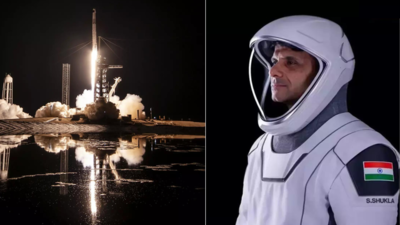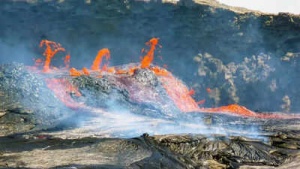An Indian astronaut, Shubhanshu Shukla, has arrived at the International Space Station (ISS), marking a significant milestone for India's space program.

Shukla, aboard the spacecraft Grace, part of the Dragon series, successfully docked with the ISS over the North Atlantic Ocean. This achievement positions Shukla as the second Indian to venture into space, following Rakesh Sharma's pioneering journey in 1984. The Axiom-4 mission also includes Slawosz Uznanski-Wisniewski, signifying Poland's return to space after several decades, and Tibor Kapu, Hungary's first astronaut in 45 years. The launch took place at Nasa's Kennedy Space Center.
Shukla's research will concentrate on the effects of microgravity on plant growth, muscle loss, mental health, and microbial behavior. These are crucial areas for long-duration human spaceflight. Additionally, he will study tardigrades to better understand survival mechanisms in extreme environments. The goal of these experiments is to develop sustainable space food systems, ensure the well-being of astronauts, and improve life support strategies for future Indian space missions.
This Earth-observing mission will employ high-precision radar to monitor surface changes, providing critical data relevant to agriculture, climate studies, and natural disaster management.
Unlike most Earth-observing satellites, NISAR will provide continuous monitoring capabilities, unaffected by daylight or weather conditions, using advanced radar technology. This will enable more accurate and consistent monitoring of natural disasters, environmental changes, and farming trends. The NISAR mission is poised to significantly impact scientists, farmers, and disaster response teams worldwide.
Newer articles
Older articles
 Moto G54 Gets Significant Price Cut in India, Making Budget Smartphone Even More Appealing
Moto G54 Gets Significant Price Cut in India, Making Budget Smartphone Even More Appealing
 X Cracks Down: Over Half a Million Indian Accounts Suspended for Policy Breaches
X Cracks Down: Over Half a Million Indian Accounts Suspended for Policy Breaches
 Africa's Rift Valley: Mantle Upwelling Drives Continent's Split and Birth of New Ocean
Africa's Rift Valley: Mantle Upwelling Drives Continent's Split and Birth of New Ocean
 Vijay Sethupathi Apologizes Amid Controversy Over Son Surya's Debut Film 'Phoenix'
Vijay Sethupathi Apologizes Amid Controversy Over Son Surya's Debut Film 'Phoenix'
 Jadeja's Accuracy Questioned: Ex-India Pacer Slams Spin Strategy in England Test Loss
Jadeja's Accuracy Questioned: Ex-India Pacer Slams Spin Strategy in England Test Loss
 IRCTC's AI Chatbot Revolutionizes Train Ticket Booking, Refunds, and Information Access
IRCTC's AI Chatbot Revolutionizes Train Ticket Booking, Refunds, and Information Access
 Ashada Gupt Navratri 2025: Unveiling Dates, Sacred Rituals & Hidden Significance of the Monsoon Festival
Ashada Gupt Navratri 2025: Unveiling Dates, Sacred Rituals & Hidden Significance of the Monsoon Festival
 Google Maps Enhances Directional Accuracy with Fused Orientation Provider Update
Google Maps Enhances Directional Accuracy with Fused Orientation Provider Update
 xAI to Open Source Grok, Democratizing Access to Musk's AI Chatbot
xAI to Open Source Grok, Democratizing Access to Musk's AI Chatbot
 Android Users Urged to Patch Now: Critical Security Flaws Expose Devices to Attacks
Android Users Urged to Patch Now: Critical Security Flaws Expose Devices to Attacks